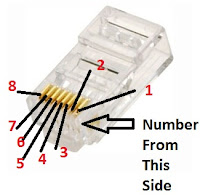There are various types of LAN standards. They all have some basic differences in the area of speed, range, capacity and many other things. For selecting a LAN standard that is perfect for you for now and for the future, needs some knowledge about them. Let’s start.
There are some types of LAN standard. In its simple form they are as follow:
- 10base- 2
- 10base-5
- 100base-TX
- 10base-T 2
- 100base-T4
- 1000base-T
- 10Gbase-T 4
Etc.
10base- 2
It is also known as cheapernet, thin Ethernet, thinnet etc. In this standard, thin coaxial cable used as communication medium. Hence it is known as thinnet. For attaching T type BNC connectors are used. Both cable and connectors are less expensive. So they know as cheapernet. It is kind of early standard for communication of LAN and becomes obsolete in modern technology.
10base-2 contains some meaning. Here 10 stand for 10Mbps speed, base stands for base-band transmission and 2 stands for range of 200 meters. Though is 185 meter actually.
The limitation of 10base-2 makes it obsolete. Speed is its one of major limitation. The other limitations are at best 30 devices can be attached its port per segment. Also for connecting two network devices more than 3 repeaters can’t be used. And at best 5 connected segments are allowed.
10base-2 is less expensive but as it has too many joint so the network open for attack of disturbance. Also it is not possible to extend without interrupting network.
10base-5
In 10base-5 the coaxial cable used is little bit thicker than that is used in 10base-2 or thin Ethernet. For this it is also known as thick Ethernet. The use of this kind of coaxial makes it range wider than 10base-2 ranges which 500 meters. Number of connecting nodes also improved. It is 100.
But it still its speed not improved. It has the same speed, 10Mbps. Also 50ohm terminator used at the end of physical network.
10base-T
Here in 10base-T “T” stands for twisted pair as twisted pair cable is used as transmission medium. And it use 8P8C modular connector or RJ45 connector as media of attachment. Its transmission speed referred as 10/100 which means it support both 10 and 100 Mbps speed. Category#3 cables are used in 10base-T. But higher order cable can also be used. Both UTP and STP cable can be used. If UTP cables are used then the range will be 100 meter and if STP cables are used then the range moves to 200 meters.
Installation of 10base-T network is pretty much easy and comparatively less expensive. In twisted pair cable there are 4 pair of cable but in 10base-T only two pair is used. It is position to run another network connection or phone connection using these two pairs of used cable. But it is not said in standard.
10base-T use TIA/EIA-568-A and TIA/EIA-568-B wiring standard. It is possible to use up to 1024 nodes in 10base-T network. Normally use a star topology with a center Hub.
100base-T
100base-T is referred as Fast internet because of speed. Its speed is 100Mbps. It can be classified in three different standards.
1. 100base-TX
2. 100base-T4
3. 100base-T2
In all three cases one thing is common. All of them use star topology. And 10base-TX is the most popular and mostly used standard.
In 100base-TX from 4 pair of cable only two pair is used as like 10base-T. Hence it can be used as the up gradation of 10base-T with changing all of it. One pair cable is used for transmitting and another is used for receiving. It uses good quality cable like category 5 cable as transmission medium and RJ45 connector as attaching medium. Use point to point connection so hub or switch required for connecting more devices. In 100base-TX 4 bits transmitted per symbol and 4B5B binary encoding system is used.
In 100base-T4, as the name suggests all 4 pair of cables are used. But it has an advantage. That is category#3 UPT cable can be used as the transmission medium. It transmits 8bits per symbol and use 8B6T encoding system. Here one pair cable dedicated for transmission and one pair cable is dedicated for reception and other two pairs can switch. Actually 3 pairs cable are used for transmitting. It is half duplex.
In 100base-T2, two pair of cable is used just as 100base-TX. The difference between 100base-TX and 100base-T2 is that it100base-T2 uses both pairs of cable for either transmitting or receiving simultaneously. For that reason it is full duplex.
1000base-T
Also known as gigabit Ethernet as its speed is 1000Mbps or Gigabit. Some classification found of this kind. Some use 4 pairs of cable and 5 levels pulse amplitude modulation (PAM-5) and some use two pairs of cable and 3 levels pulse amplitude modulation (PAM-3).
Some examples of gigabit standard are as follow:
1. 1000BASE‑CX
2. 1000BASE‑SX
3. 1000BASE‑LX
4. 1000BASE‑LX10
5. 1000BASE‑ZX
6. 1000BASE‑TX
100base-FX
100base-FX use optical fiber as transmission medium. It uses two strand of optical fiber. One for transmitting uses another for receiving.



















